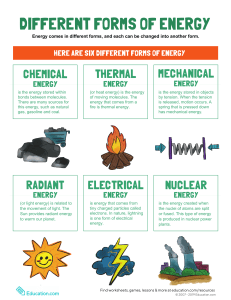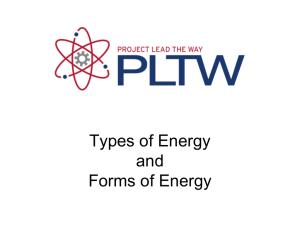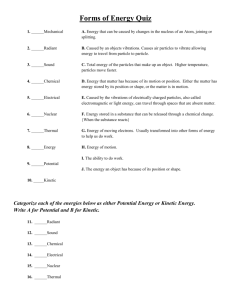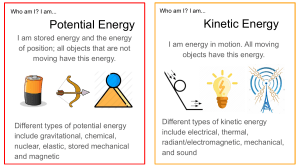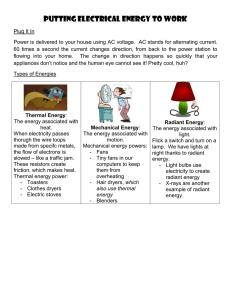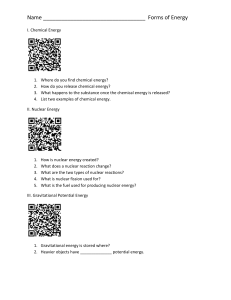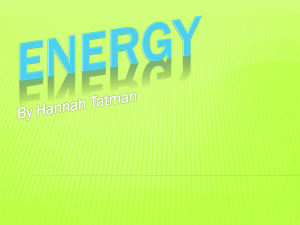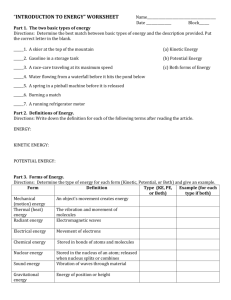Forms of Energy: Radiant, Thermal, Nuclear, and More
advertisement
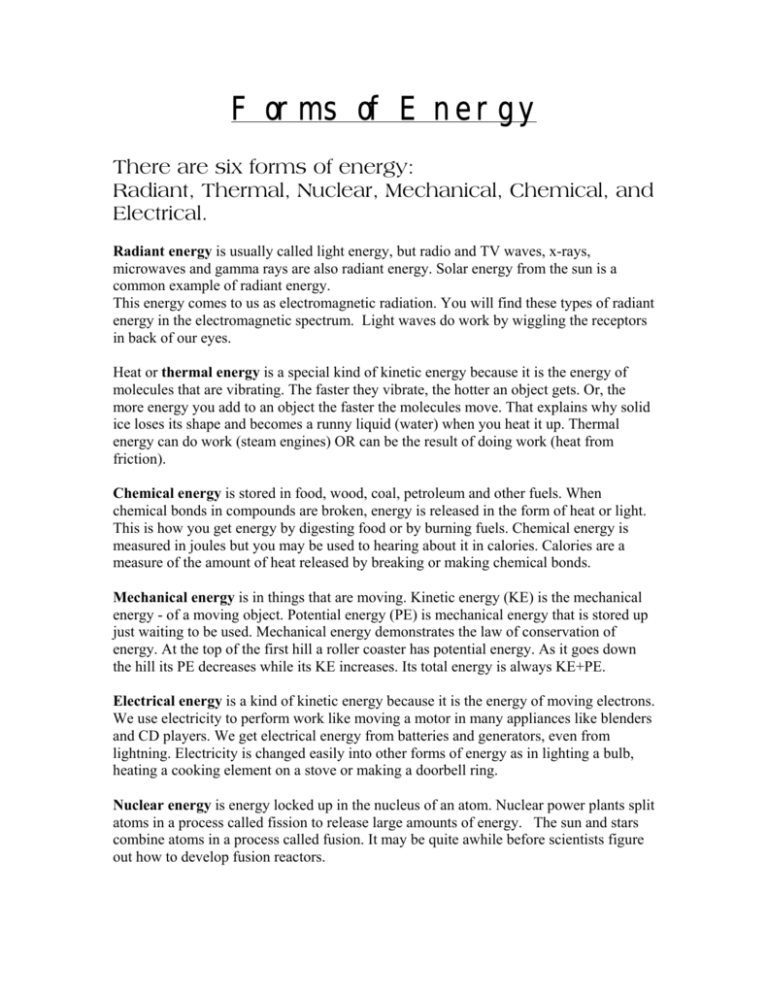
Forms of Energy There are six forms of energy: Radiant, Thermal, Nuclear, Mechanical, Chemical, and Electrical. Radiant energy is usually called light energy, but radio and TV waves, x-rays, microwaves and gamma rays are also radiant energy. Solar energy from the sun is a common example of radiant energy. This energy comes to us as electromagnetic radiation. You will find these types of radiant energy in the electromagnetic spectrum. Light waves do work by wiggling the receptors in back of our eyes. Heat or thermal energy is a special kind of kinetic energy because it is the energy of molecules that are vibrating. The faster they vibrate, the hotter an object gets. Or, the more energy you add to an object the faster the molecules move. That explains why solid ice loses its shape and becomes a runny liquid (water) when you heat it up. Thermal energy can do work (steam engines) OR can be the result of doing work (heat from friction). Chemical energy is stored in food, wood, coal, petroleum and other fuels. When chemical bonds in compounds are broken, energy is released in the form of heat or light. This is how you get energy by digesting food or by burning fuels. Chemical energy is measured in joules but you may be used to hearing about it in calories. Calories are a measure of the amount of heat released by breaking or making chemical bonds. Mechanical energy is in things that are moving. Kinetic energy (KE) is the mechanical energy - of a moving object. Potential energy (PE) is mechanical energy that is stored up just waiting to be used. Mechanical energy demonstrates the law of conservation of energy. At the top of the first hill a roller coaster has potential energy. As it goes down the hill its PE decreases while its KE increases. Its total energy is always KE+PE. Electrical energy is a kind of kinetic energy because it is the energy of moving electrons. We use electricity to perform work like moving a motor in many appliances like blenders and CD players. We get electrical energy from batteries and generators, even from lightning. Electricity is changed easily into other forms of energy as in lighting a bulb, heating a cooking element on a stove or making a doorbell ring. Nuclear energy is energy locked up in the nucleus of an atom. Nuclear power plants split atoms in a process called fission to release large amounts of energy. The sun and stars combine atoms in a process called fusion. It may be quite awhile before scientists figure out how to develop fusion reactors.

